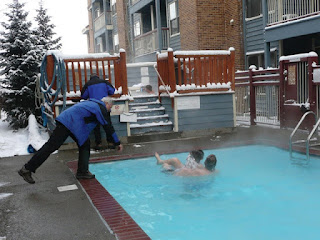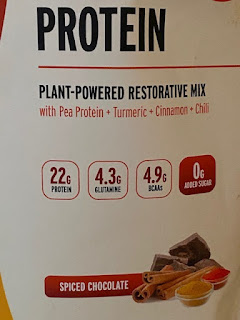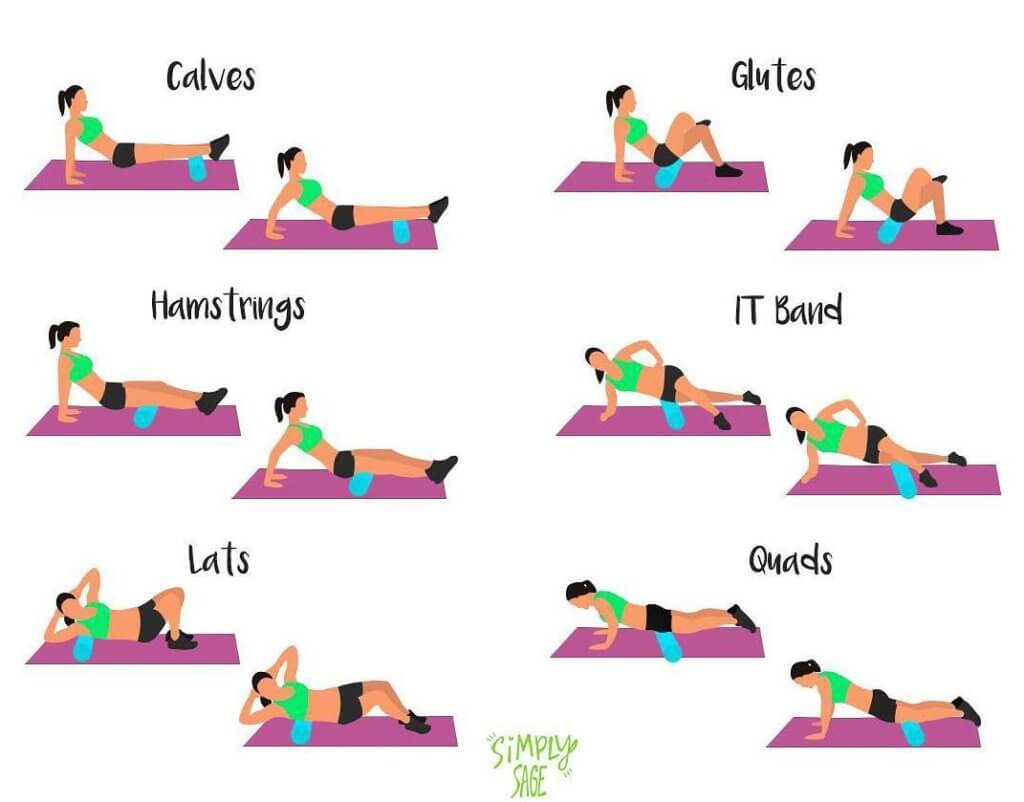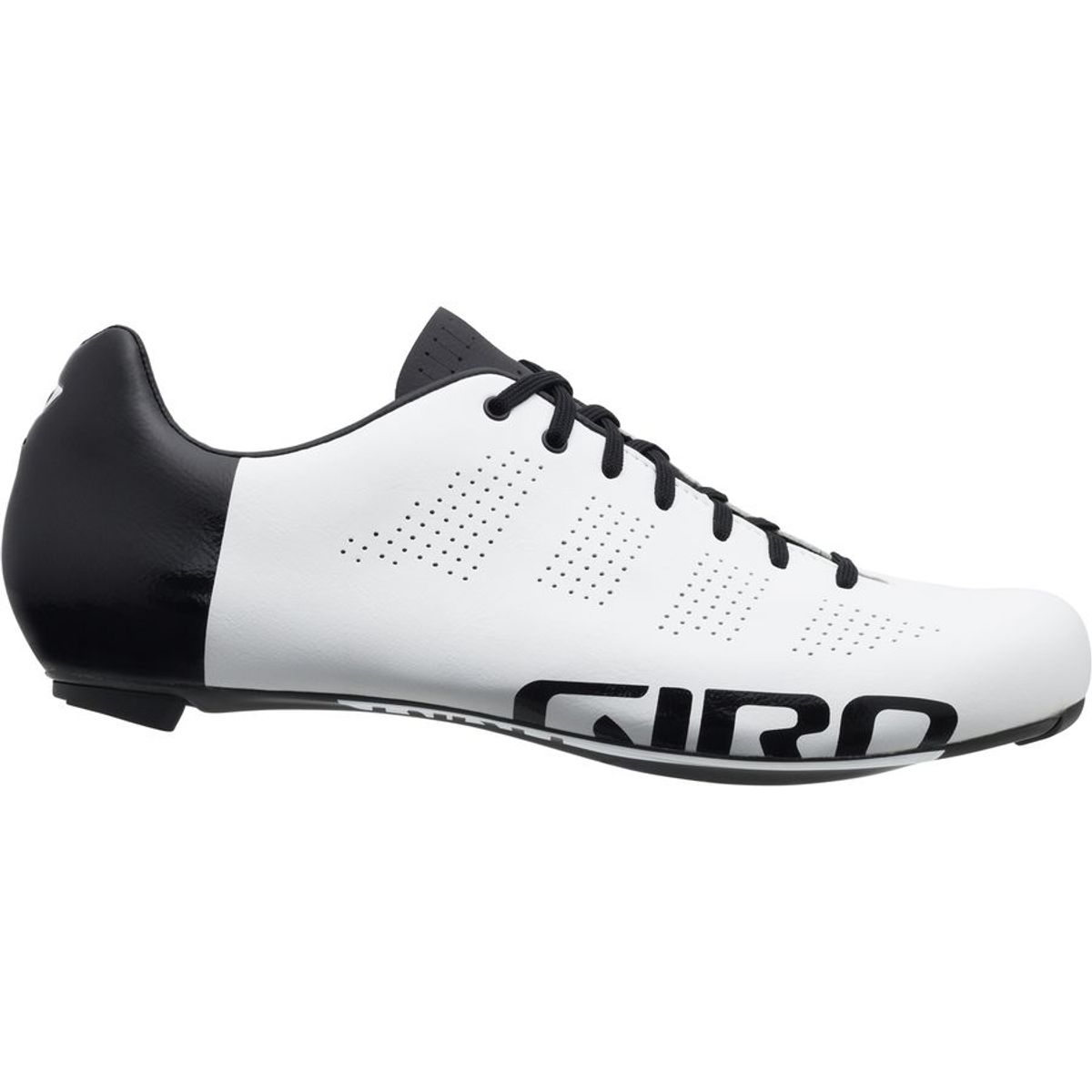Monday, November 2, 2020
Bill commented on Comet Sighting DAVE IS ALIVE!!!!
Friday, October 30, 2020
The Physics of Cycling - from TrainingPeaks.com
Posted: 29 Oct 2020 09:22 AM PDT Physics and cycling have a wonderful relationship – the more you know, the faster you go. On some occasions such as grand tour stages and triathlon bike legs, energy conservation is an important factor but largely, speed and efficiency remain king. That being said, the problem with physics is while we can use it as a tool for optimization, it's also constantly working against us in the form of friction. In this article, I will review the physics behind three key friction-based factors that challenge even the fittest of cyclists and then delve into how to optimize your cycling efficiency. Rolling ResistanceRolling resistance is the most clear-cut factor, so we will start there. In terms of speed, rolling resistance is roughly constant. Generally speaking, it contributes less to overall resistance than aerodynamic drag apart from slow speeds. Since it increases with weight, it may be more of a consideration for heavier athletes or athletes who have recently gained or lost a substantial amount of weight. Various tire types are faster depending on the terrain and road surface. Data on which tire is fastest can be found online but there's more to consider than saving watts – puncture protection and durability are also key considerations if you're on a lower budget. Generally, aim to buy the fastest tire as possible within the constraints you have. Here are a few of my favorite tire options.
Drivetrain ResistanceDrivetrain resistance is huge and it largely depends on the state of your drivetrain. The old adage, a clean bike is a fast bike, is true and most of the optimization comes from cleaning it. If you want to save the odd watt here and there with oversized jockey wheels, a waxed chain and some hydrophobic chain lube, then be my guest. Optimizing chain line efficiency will also helpful. But most importantly – clean and lube your bike regularly. I give mine a quick wipe after every ride, a full clean after a muddy/wet ride and most importantly, a deep clean before EVERY race. Another tip – get a bike shop to check out your bearings and replace anything worn. It's a cheap way to speed your bike up with no extra training. There's no point in training for six months to gain an extra 30W of fitness if you waste 30W with a dirty bike and sticky bearings. Aerodynamic DragNext, I'd like to discuss aerodynamic drag. The faster you are, the more you need to pay attention to this as the force of drag is proportional to the square of your speed. What that means is as your speed doubles, the drag increases four times as much. So, you need to work much harder to overcome the difference between 40kph and 45kph than you do to overcome the difference between 20kph and 25kph even though it's the same speed increase. As a result, this means two things. One, the faster you go, the greater the percentage increase an aero adjustment will yield. Two, the longer you ride, the bigger the time differences these aero gains will make. Okay, so how do we actually access these aero gains? Go and spend £15k on a TT bike right? Wrong. A poorly fitted, expensive TT bike will likely be slower than a well-fitted road bike with clipless pedals. As such, the first step is to go and see a great bike fitter and get in a wind tunnel if the cost is no barrier. Think about this simply, you punch a much bigger hole in the air than your bike does, so body positioning accounts largely for how aerodynamically you move through space. On the same subject, what you cover your body with also makes a big difference. A well-fitted skin-suit or tri-suit along with a well-fitted aerodynamic helmet will also make a big difference. After this, considerations such as wheels, overshoes and frames should be taken into account. Aerodynamic equipment data can be found online, but a piece of advice—get this information independently from the manufacturer. Never take assurances on quality from the person trying to sell you stuff. Energy EfficiencyThe final physics-based consideration is the amount of energy you have. The way in which you should consider your expenditure of energy is twofold—how long will the race take me to complete and what features will I have to navigate on this course (think hills, wind and road surface primarily). There are tools available online that'll help you pace a bike leg perfectly. Riding at exactly the same power is only the most efficient use of your energy on a completely flat, windless, perfectly surfaced road. To ConcludePhysics is working against you in every way it knows how—friction with the road, friction within the moving parts on the bike and friction with the wind. Then add in some gravity on the hills for good measure. Luckily physicists have given us the tools to fight this. We can buy tires that roll faster, clean and lube our chains, get a decent bike fit, buy some aero gear and use our energy strategically. While these differences may feel small independently, they'll add up to large time gains over the course of a road race, time trial or triathlon bike leg. The post The Physics of Cycling appeared first on TrainingPeaks. |
Wednesday, September 23, 2020
Triathlon: Is pool swimming safe?
Is pool swimming safe?
The chlorination levels in our local pools do inactivate COVID-19 and other viruses. Here is a simple ten-step checklist for when you beginning attending public lane swim hours.
Read in Triathlon: https://apple.news/A1CtgJU7aSdKcTJnmL4JG7A
Shared from Apple News
Sunday, May 31, 2020
Wednesday, May 6, 2020
Places To Visit
Breckenridge 2009
Monday, May 4, 2020
Friday, May 1, 2020
Good Luck Virtual Racers!
Monday, April 6, 2020
Monday, March 2, 2020
Saturday, February 29, 2020
Training Reflections From A 51 Year Old
Sunday, February 23, 2020
TOP TEN LIST: Favorite Tri and Run Toys
I purchased my first stand alone bike GPS in 2018. This is a small package that packs a wallop in features including smart notifications from your phone and, when racing, connects with your watch using a feature called "extended display" so you don't have to risk life and limb by trying to look at your watch while going 30 mph.
5. SPIbelt Race Belt - $35
As the great Ricky Bobby once said, "If you ain't first, you're last." If you are going to do your best and have your best chances to perform, you need to get waxed. WAX FOR YOUR CHAIN!!! Here are the directions and here's you need:
3. The Garmin Forerunner 945 GPS Triathlon Watch - $500+
I previously used the Forerunner 310XT and 920XT. They both were helpful, and I loved them for my training. I recently decided to upgrade and have been really happy with the 945 purchase. The changes from the 920XT are noticeable in terms of features, and the 945 actually looks enough like a "regular" watch that I wear it each and every day. Highly recommended!!!
2. Nike VaporFly 4%
These shoes are fast...meaning I race faster than I think I should when I wear them. You might think it is all in my head, but I don't think it is. The Science in Sport Podcast about these shoes (and Nike's successive shoes) seems to indicate it is actually true. The are current "legal" to wear. Get pair while you can. Limited sizes of the original Vaporfly 4% are available on the Nike website, and the new/updated Alphafly will be available soon.
1. Giro Empire ACC Cycling Shoes + Modifications - $100 - $300
Being Careful - Ride Substituted For Long Run
So.....yesterday's tempo run with 18 minutes at sub 7 minute pace resulted in a pain in the ball of my left foot. Darn! I hoped and thought it would just go away during the day, but it was still painful last night.
And I had hoped I would wake up without pain and compete today's long run outside in the unseasonably warm temperatures. However I still felt the pain this morning and decided it would be better to ride instead of running. I completed an Ironman pace 90 minute ride and it felt pretty good. I think I made the right decision.
Time will tell if the injury is more or less serious. I've got a long road ahead and really want to be healthy. I hope my run schedule will pick back up in the next few days to be on schedule. Wish me luck!!!
Sunday, February 9, 2020
Florida Training Weekend Update 2
I had hoped to get in the pool, but it was a little too crowded for that.
Thanks to Mike M for joining me for today's run. It was a good one... 9 miles in the sun!
Saturday, February 8, 2020
Florida Training Weekend Update 1
Afterwards there was some stretching, eating, a boat tour and some drinks. A couple photos:
Tuesday, February 4, 2020
2020 Goal Update - January
Total hours worked out: 16.69
Swim yardage: 1000
Bike Miles: 39.5
Run Miles: 85.4
Process goals:
Eating
- Eat 500 calories less each day than what I burn in January - April - ON TARGET
- Eat an equal number of calories to what I burn in May - November
- Eat vegetables or fruit at ever meal (high diet quality score) - ON TARGET
- Less than 80 grams of sugar per day January - April - ON TARGET
Weight
- 185 pounds by February 1 - ON TARGET, weight on 2/1/2020 185
- 180 pounds by March 1
- 175 pounds by April 1
Body Composition
- Under 10% body fat by April 1- body fat 10.6 on 2/1/2020
Health
- Stretch after every workout - ON TARGET
- Physical therapy twice a week using the MedSport PT activities I have from previous appointments - ON TARGET
- Lift twice a week, 8 x a month (bench press, standing rows, military press, dead lifts, squats, pull ups. Will need to investigate if others should be in the mix too) - ON TARGET
- Sleep at least 7 hours per night - ON TARGET
Training (general)
- Start TrainerRoad Full Distance Low Volume Base plan on May 12
- Start TrainerRoad Full Distance Low Volume Build plan on August 4
- Start TrainerRoad Full Distance Low Volume Specialty plan on September 29
- Average training time per day this year of at least 1 hour
Swim
- Swim 4x a month in January - April - NOT ON TARGET, swam once in January, Yikes!
- Swim at least 3x a week May - November
Bike
- Ride at least 4x a month January - April - ON TARGET
- Ride 3-4x a week May - November
- FTP test on February 3, 4, or 5 - ON TARGET, FTP 226 all in aero position...yes, a big step back but whatever (for now)
- FTP test on May 1
- FTP test on May 12
- 5% FTP increase by August 4
- 10% FTP increase by September 29
Run
- Run at least 4x a week January - April - ON TARGET
- Run 3-4x a week May - November
- 3 half mile repeats in 3:10 in early February
- 6 half mile repeats in 3:10 in early March
- 41 minutes at the K2 10K on March 22
- 12 half mile repeats in 3:10 in late March/early April
- 5 miles in 33:30 on the track on April 4
- Tempo runs at 8 min pace May - November
Perfomance goals:
- Lose at least 10 pounds (to 180 lbs or under) by June 1 - ON TARGET, Current lowest annual weight 183.4
- Swim 200000 yards for the year: Current annual total: 1000 yards
- Ride 3700 miles for the year - Current annual total: 39.5 miles
- Run 1100 miles for the year - Current annual total: 84.5 miles
- Run 7 min pace or under (1:32 or under) at the Marian Half-marathon
- Finish TC 70.3 in 5:15 or under
- Swim TC 70.3 in 38 minutes
- Run TC 70.3 in 8 min pace or less
- Finish Memphis 70.3 with a progressive performance from what I was able to do at TC 70.3...hard to quantify the goals since I'm not at all familiar with the course
- Run Memphis 70.3 in 8 min pace or less
- I would like to do 70.3 in under 5 hours again, but I'm not sure that will happen this year fitness wise. I'm also not sure I've got the right course for that.
- Finish IM Coz swim in under 1:15
- Ride IM Coz at 65% of my then current FTP
- Run IM Coz in 4:15 or less
- Finish IM Coz in 11 hours or under.
- Finish all of the races I've entered and be healthy!
Sunday, February 2, 2020
Goals for 2020
"There are three types of goals: Outcome goals, performance goals, and process goals. Separating goals helps organize your thought process and allows you to focus on what you want to accomplish.
- An outcome goal is a goal that isn’t under your control. It’s the big picture. For example: Being the most dominant defensive player on the field.
- Performance goals are what you are trying to achieve. They are the building blocks that help you reach your outcome goal. To be the most dominant defensive player you can, for example, try to win 100% of your 50-50 balls or be on your opponent within two seconds of them having the ball. With the help of process goals, the performance goals can be reached.
- Process goals are completely under your control. They are the small steps you take to get to the performance and outcome goals during each training session or game. For example, in order to win 100% of your 50-50 balls, you can work out 3 or 4 days a week and improve your strength. In order to pick up your man more quickly, you can use focus, concentration, and communication to read the ball and your opponents. "
Below are my goals for 2020.
Performance goals:
- Lose at least 10 pounds (to 180 lbs or under) by June 1
- Finish all of the races I've entered and be healthy!
- Swim 200000 yards for the year
- Ride 3700 miles for the year
- Run 1100 miles for the year
- Run 7 min pace or under (1:32 or under) at the Marian Half-marathon
- Finish TC 70.3 in 5:15 or under
- Swim TC 70.3 in 38 minutes
- Run TC 70.3 in 8 min pace or less
- Finish Memphis 70.3 with a progressive performance from what I was able to do at TC 70.3...hard to quantify the goals since I'm not at all familiar with the course
- Run Memphis 70.3 in 8 min pace or less
- I would like to do 70.3 in under 5 hours again, but I'm not sure that will happen this year fitness wise. I'm also not sure I've got the right course for that.
- Finish IM Coz swim in under 1:15
- Ride IM Coz at 65% (or better) of my then current FTP
- Run IM Coz in 4:15 or less
- Finish IM Cos in 11 hours or under.
Process goals:
Eating
- Eat ~500 calories less each day than what I burn in January - April
- Eat an equal number of calories to what I burn in May - November
- Eat vegetables or fruit at ever meal (high diet quality score)
- Less than 80 grams of sugar per day January - April
Weight
- 185 pounds by February 1
- 180 pounds by March 1
- 175 pounds by April 1
Body Composition
- Under 10% body fat by April 1
Health
- Stretch after every workout
- Physical therapy twice a week using the MedSport PT activities I have from previous appointments
- Lift twice a week, 8 x a month (bench press, standing rows, military press, dead lifts, squats, pull ups. Will need to investigate if others should be in the mix too)
- Sleep at least 7 hours per night
Training (general)
- Start TrainerRoad Full Distance Low Volume Base plan on May 12
- Start TrainerRoad Full Distance Low Volume Build plan on August 4
- Start TrainerRoad Full Distance Low Volume Specialty plan on September 29
- Average training time per day this year of at least 1 hour
Swim
- Swim 4x a month in January - April
- Swim at least 3x a week May - November
Bike
- Ride at least 4x a month January - April
- Ride 3-4x a week May - November
- FTP test on February 3, 4, or 5
- FTP test on May 1
- FTP test on May 12
- 5% FTP increase by August 4
- 10% FTP increase by September 29
Run
- Run at least 4x a week, January - April
- Run 3-4x a week, May - November
- 3 half mile repeats in 3:10 in early February
- 6 half mile repeats in 3:10 in early March
- 41 minutes at the K2 10K on March 22
- 12 half mile repeats in 3:10 in late March/early April
- 5 miles in 33:30 on the track on April 4
- Tempo runs at 8 min pace or faster, May - November
Sunday, January 19, 2020
HNY 2020 and MORE!!!

Dear Friends,
Happy New Year! I am thrilled to report that I'm more healthy than not....no broken bones, a left hamstring that I think is doing OK, and a mostly healed plantar fascia tear. In other words I've got a lot of hope about what 2020 will bring in terms of athletic success.
In case you are interested, here are my previous new year updates:
- 2018 (written late 2017)
- 2019
Along with the injuries, here is how 2019 turned out:
- Swimming: 85084 yards (48 miles)
- Bike: 2088 miles
- Running: 833 miles
Total hours working out: 291.6 hours.
These are not bad totals especially when considering the injuries. It is about 75% of the 2018 totals. There were not 50+ or all-time PRs this year. I hope for a strong 2020 relative to 2019! Let's do this!
Here's what I've got planned:
- April 2020: Martian Half-marathon, hoping for a good time that will get me a guaranteed spot in the NYC Marathon in 2021
- Late-April: Tri training full on starts
- June, July, August: Maybe do a dinosaur tri or two
- Late August: Traverse City 70.3
- Early October: Memphis 70.3
- Late November: Ironman Cozumel.
Without a doubt that is my most ambitious season ever, yet I'm feeling it is well-balanced without a full marathon and with lots of cross training.
I will soon post my process, performance and outcomes goals for 2020. I've not done this before but am going to give it a whirl!





























